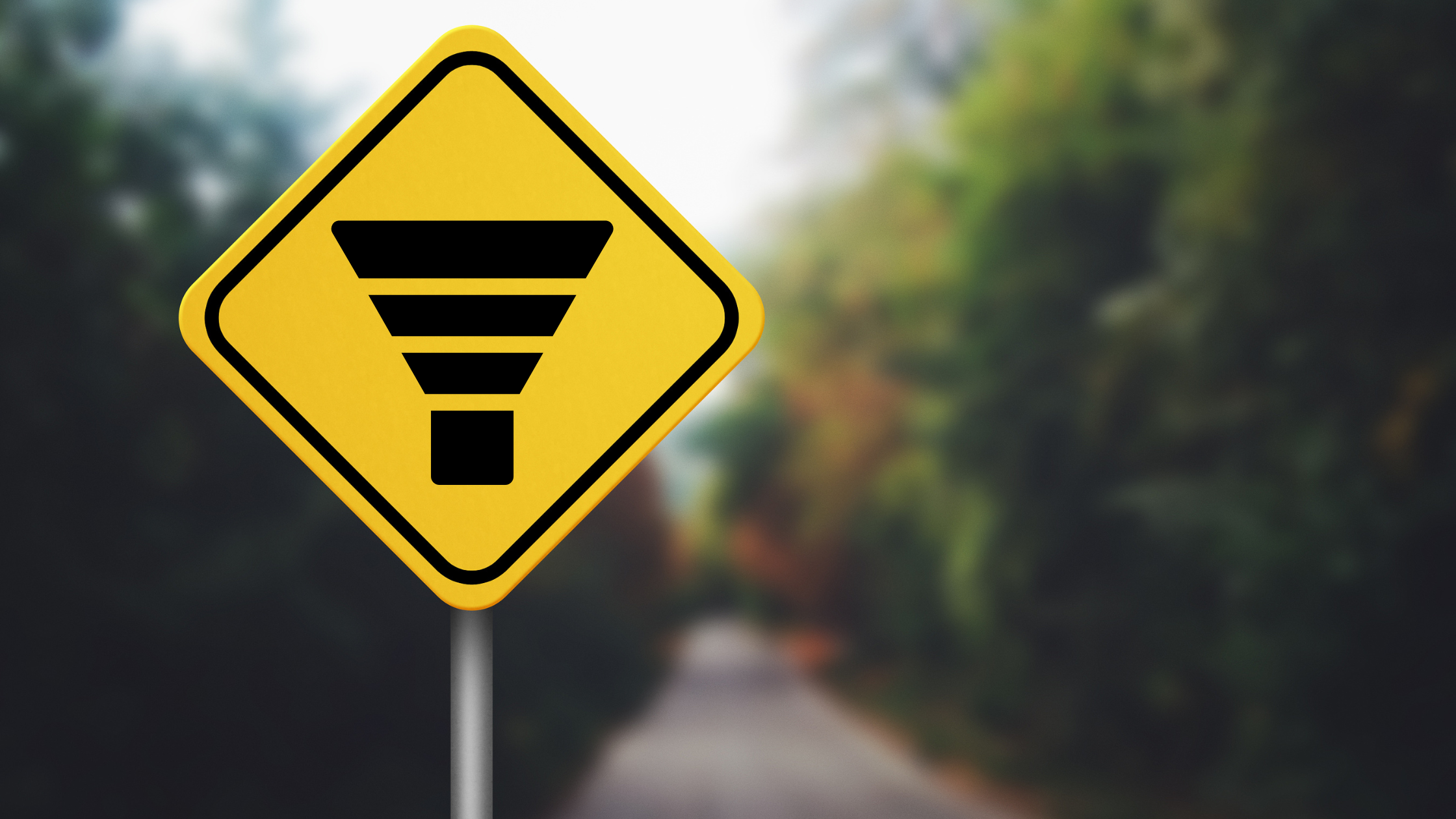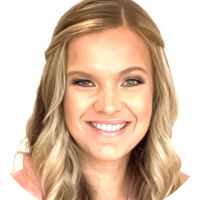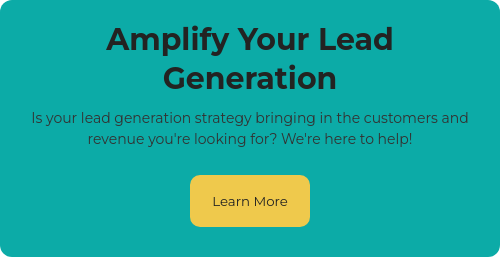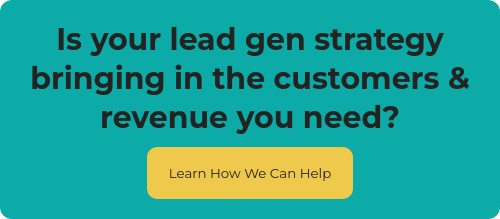Are you here for the FUN(nels)? Well, we’re here to bring the FUN(nels).
When it comes to lead generation, the funnel represents the journey every lead takes from the time you raise their awareness of your brand through their consideration and decision-making process.
There are endless ways to represent the lead generation funnel, and you’ll see a lot of them here. But what’s most important to note is that without a solid understanding of the lead gen funnel, you won’t be able to effectively get your leads into it and keep them there until they come out the other side as a conversion.
Ready for some FUN(nels)? (Okay, we promise we’re done with the joke.)
What Is a Lead Generation Funnel?
As we said, your lead gen funnel might look a bit different from others, but all follow the same general concept — your leads enter at the top (the wide part of the funnel) and then move through the stages, getting closer to the narrower part of the funnel until they become a conversion.
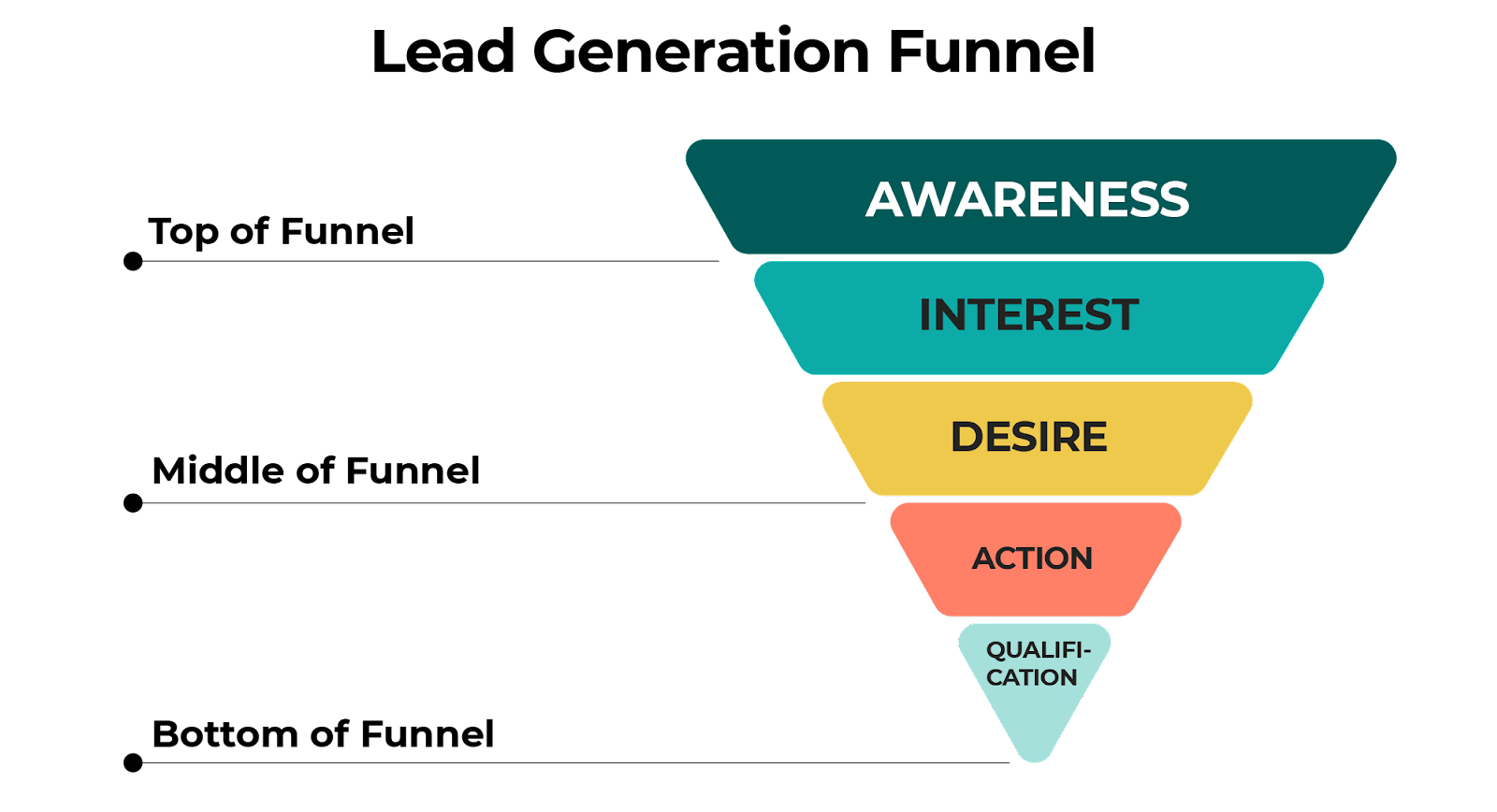
The lead gen tactics you use will differ based on where your leads are in the funnel at any given time. Moving leads through the funnel is a combined effort between marketing and sales. While marketing usually handles the top of the funnel (getting leads in) and sales handles the bottom (turning leads to conversions), there’s a significant overlap.
Understanding the lead generation funnel is the first step in crafting a lead gen plan that boosts conversions and grows your brand.
What Are the Lead Funnel Stages?
Remember the structure of the funnel — wide at the top, narrow at the bottom. Leads usually enter the funnel near the widest point. This is the attraction stage, where they’ve just become aware of the brand or aware that they have a problem that needs solving.
From there, leads move into the consideration stage, where they understand they have an issue and that several brands (including yours) can solve it.
Toward the bottom of the funnel is the decision stage, where the lead has weighed their options and chosen the brand they feel best meets their needs. Once they make a purchase (or take the desired action of the lead gen campaign), they’re a conversion.
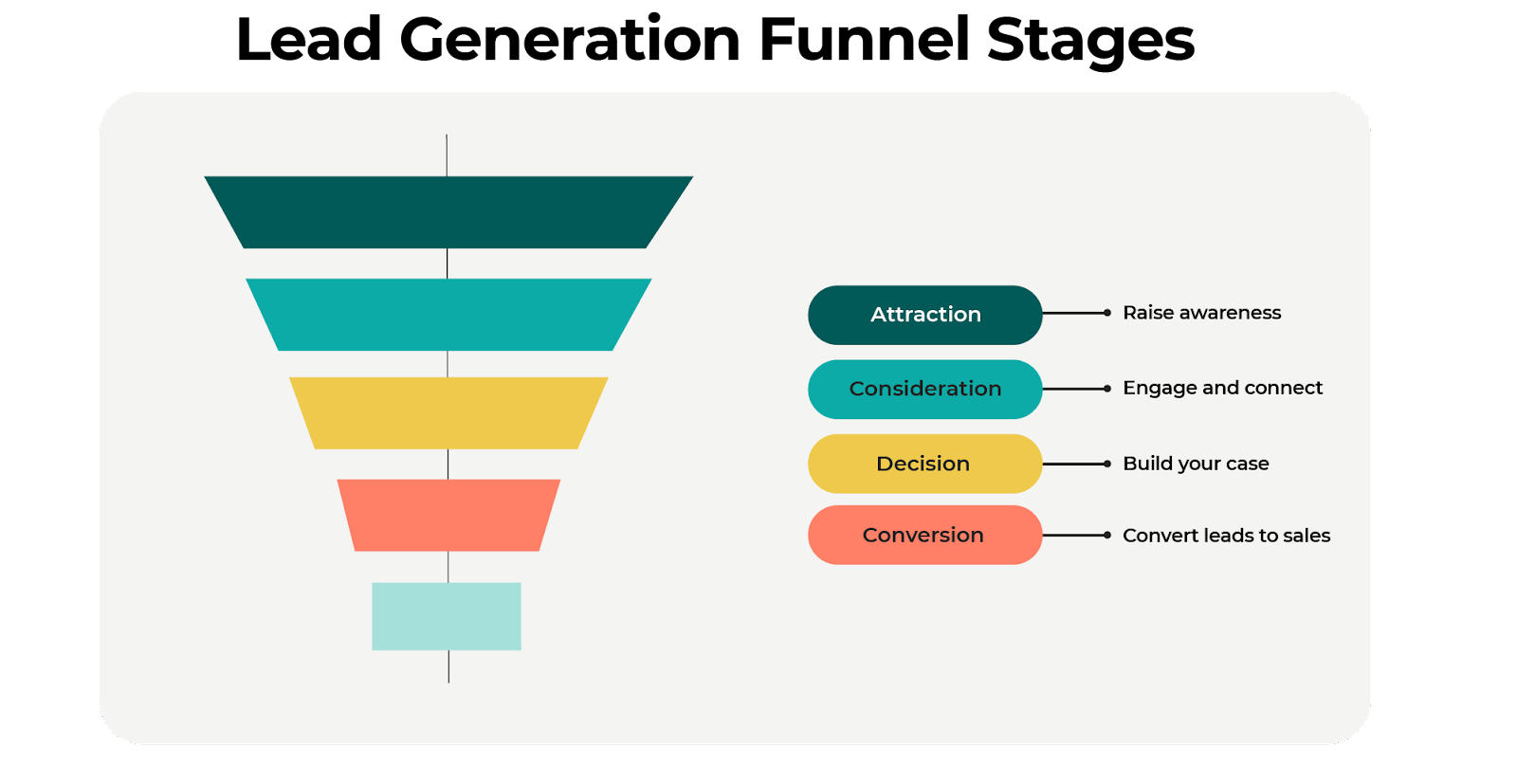
But that’s not all! While those are the fundamental stages of the lead gen funnel, you can also invert it (think of an hourglass shape), and on the other side, the lead — who’s now a customer — becomes part of the referral process, bringing new leads into the funnel.
Each of the major stages of the funnel (awareness, consideration, decision) is denoted by widely accepted abbreviations: TOFU (top of the funnel), MOFU (middle of the funnel), and BOFU (bottom of the funnel).
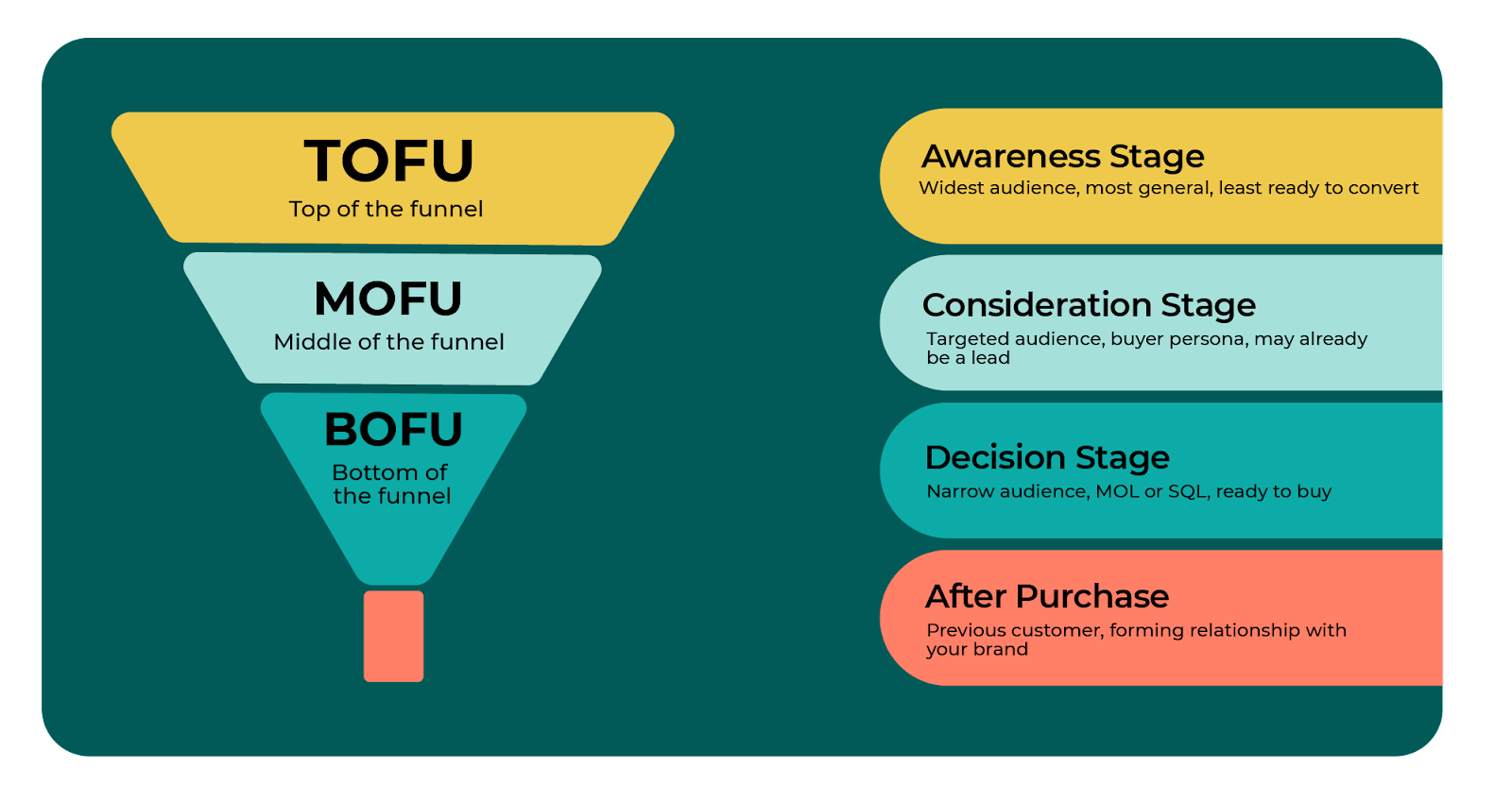
TOFU
This is the very first stage when leads first enter the funnel. At this point, they don’t really know your brand, and they may not even know they have a problem to solve. TOFU leads are cold leads — and they need plenty of nurturing to warm up to conversion.
If you’re targeting TOFU leads, you want to make sure any content you offer them is very broad and general and not sales-oriented. Go too aggressive, and they’ll probably shy away. Instead, focus on supplying them with information they need to become aware of your brand and what it offers.
MOFU
MOFU leads are in or near the consideration stage. They’ve got a problem, and they’re in search of a solution. MOFU leads can come into the funnel at this stage, or they may have moved here from TOFU/awareness.
MOFU leads tend to want more information than TOFU leads — they’re looking for in-depth content that provides specific details on what they’re trying to solve. Whitepapers, ebooks, and research reports are all great forms of MOFU content.
BOFU
BOFU leads are the warmest leads. They’ve gone through the funnel, so they understand their problem, they’re aware of your brand, and they know which solutions they’re looking at. Now, they’re ready to make a purchase decision.
The only thing standing in their way? Your competition. This is the point they’ve narrowed down their options, and your brand is in the running with some fierce competitors. Free trials, case studies, and product comparisons are all highly effective forms of BOFU content.
The Lead Generation Process
Having fun yet? Don’t worry — we’ve got a few more funnels up our sleeve.
If you really want to dig deep into the lead gen process, you’ll find that the funnel stretches as leads move through it, so there are actually more steps than the primary three stages of awareness, consideration, and decision.
In the example below, the funnel has been repurposed to show different types of leads, along with the transition from marketing to sales.
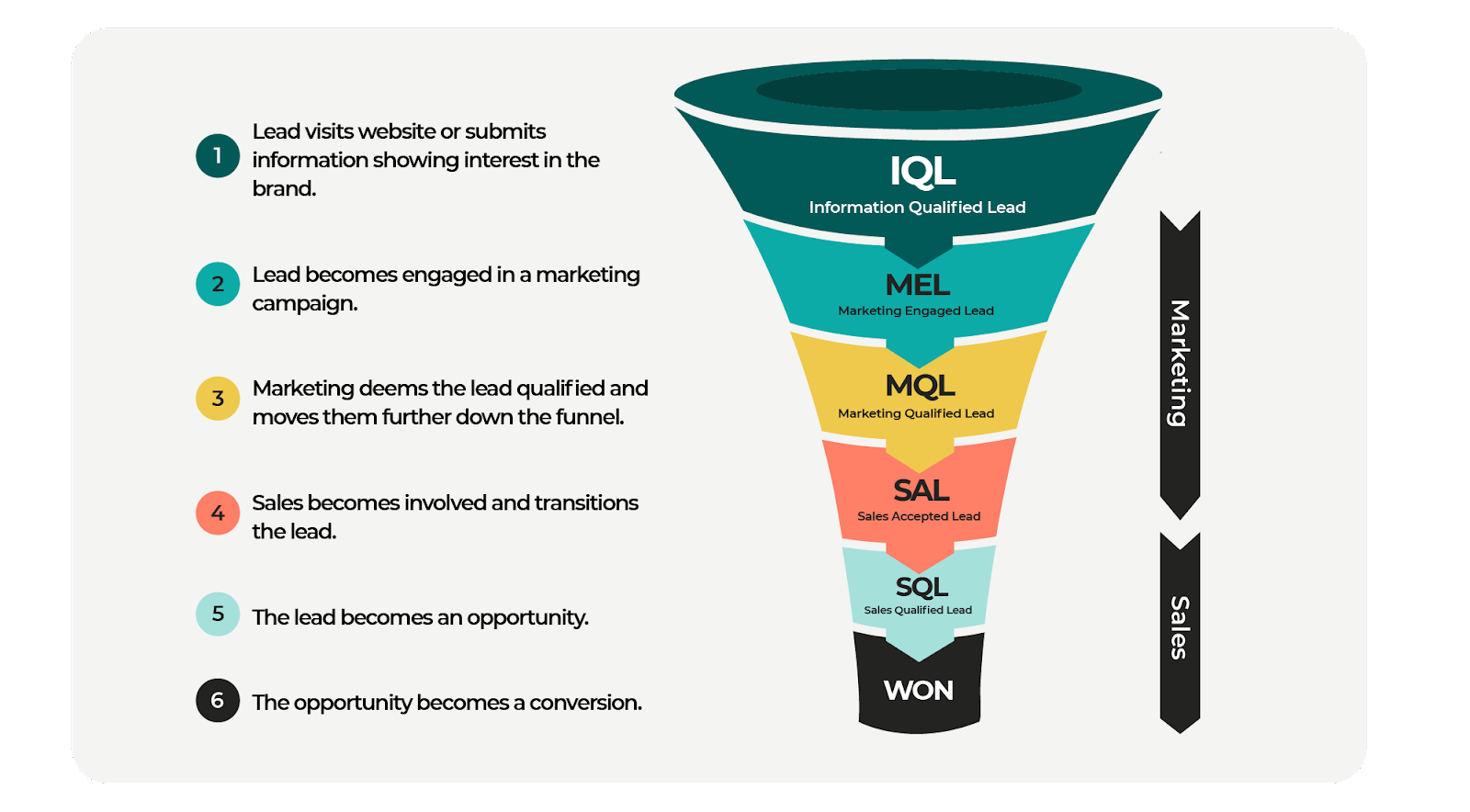
So what steps does the lead gen process include? Let’s find out:
Acquire leads
To get leads through your funnel, you first need to get them into the funnel. Most of the time that means you have to give them a reason to give up their personal information, like a phone number or email address.
One of the best ways to capture leads is by offering them a lead magnet. A lead magnet can be any of a wide variety of content assets that are designed to offer value to prospective leads. Often, lead magnets are gated content, so in order to get the download, they’ll have to exchange it for their details.
Nurture leads to become prospects
Nurturing is very commonly done via email and happens after your lead is in the funnel and has expressed an interest in your brand or product. At this point, they haven’t reached the consideration stage yet, so it’s up to you to show them your brand is reputable and trustworthy and that you offer solutions they need.
Nurturing is a delicate balance between building a relationship and nudging them toward conversion. A hard sell is not going to work at this point — what they need is to feel welcomed and valued.
Qualify leads
As noted in the funnel above, it’s important to qualify leads so you understand exactly what stage they’re in and what they need to continue moving through.
There’s no overall accepted framework for lead qualification, and it might vary depending on the structure of your team and the relationship between sales and marketing. The two most widely accepted lead types are marketing qualified leads (MQLs) and sales qualified leads (SQLs). Again, depending on your company and brand, you might have other types of leads, like information qualified leads (IQLs) or product qualified leads (PQLs).
Whatever lead types you have, you’ll need to determine your lead qualification framework (which usually involves some form of lead scoring), then use that as your basis to move leads out of the funnel or further through to sales.
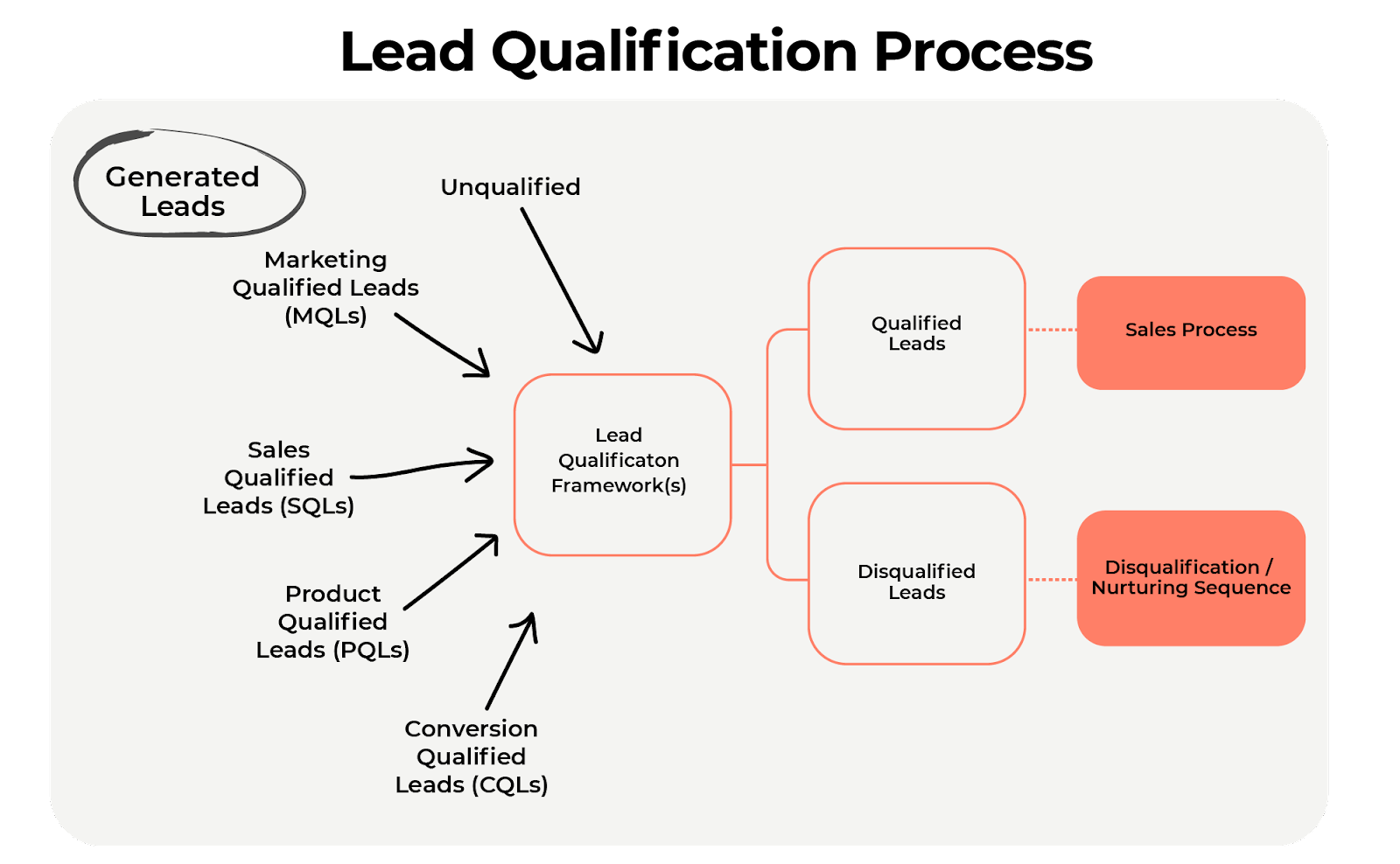
As we noted, the two most common lead types are MQLs and SQLs.
Marketing qualified
An MQL is a lead that is primed and ready to move toward conversion. They’ve already shown interest in the brand, have supplied their contact information, and often have taken another step, like signing up for a free trial or scheduling a demo.
Sales qualified
When you begin the handoff to the sales team, they’ll have their own criteria for moving an MQL to an SQL. An SQL is ready to make a purchase, and it’s now up to sales to close the deal. It’s critical that you have a solid sales enablement strategy to make the transition as seamless as possible.
Opportunity
An opportunity is what happens when a lead is at the decision stage and is leaning in the direction of choosing your brand. This is mission-critical — you need a sales team that can sway the opportunity in your direction. This is more than nurturing — it’s a negotiation. Discounts and exclusive deals may come into play at this point as you work to sweeten the pot so they’ll choose your brand.
Convert leads
All roads have led up to this point. This is where sales makes an offer so good that the opportunity becomes a conversion. This, of course, is one of the primary goals of all lead generation. You’ve put in the hard work, and now, along with sales, you’ve closed the deal. Job well done…but that’s not all.
Recycle leads you don’t close
Not every lead is going to become a conversion, and the funnel doesn’t end at a sale. In fact, let’s consider that hourglass-shaped funnel again:
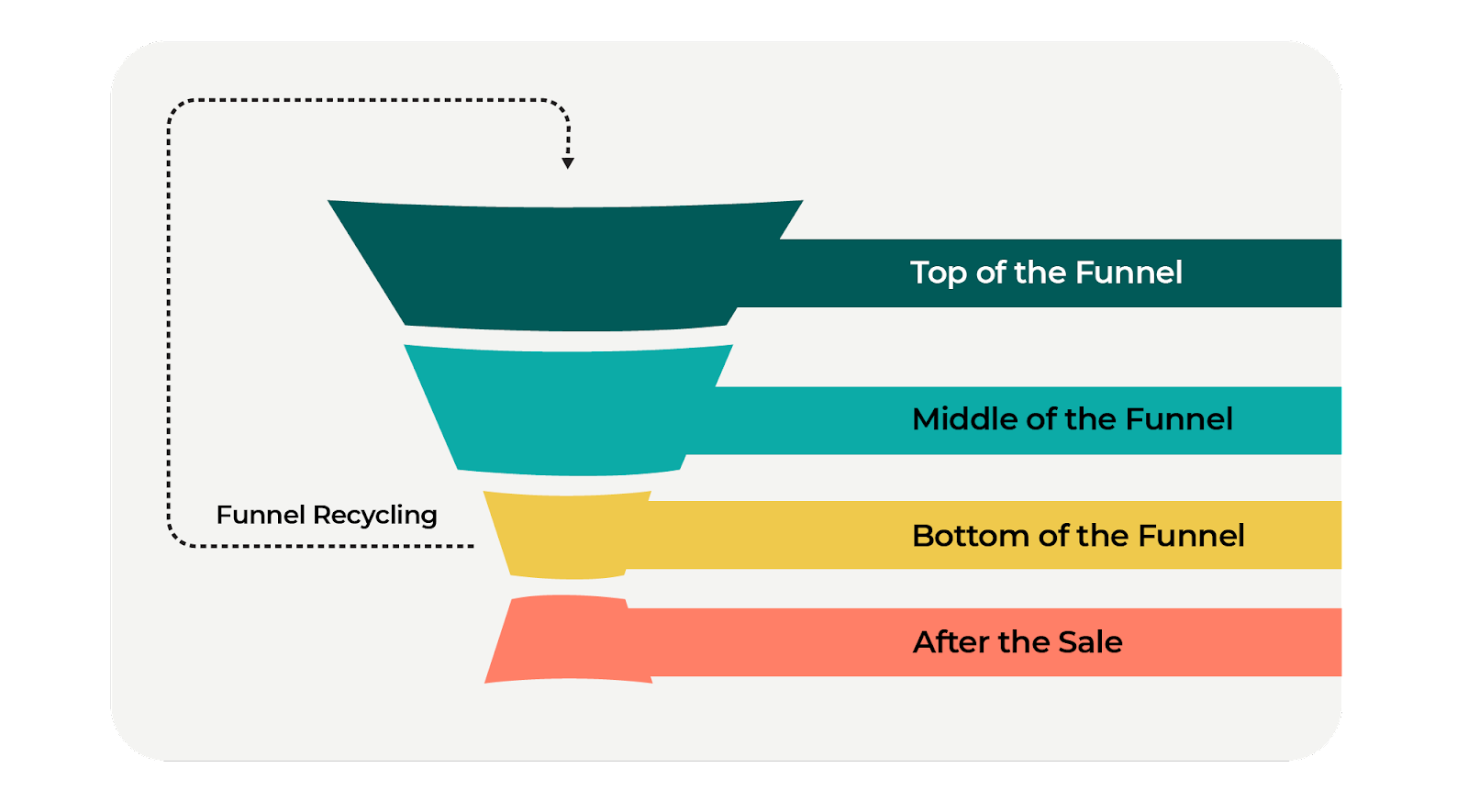
Note the bottom section is for after-the-sale nurturing. You want customers to return and refer others, so this becomes a critical part of the lead generation funnel.
On the other hand, for leads that fall out of your funnel, you might think that’s the end, but it’s really just another opportunity. No matter where they drop off, make sure you have a plan in place to get them right back into the funnel. Design a specific nurturing strategy for this, like an abandoned cart or retargeting campaign.
How to Build an Effective Lead Generation Funnel in 11 Steps
Ready to build your own lead generation funnel? Let the games begin! We’ve got all the steps you need to create a lead generation funnel that pulls traffic in and drives them through to conversion.
#1: Define your buyer persona
Creating a buyer persona is one of the first and most critical steps when building your lead gen funnel. You’ve likely already done some in-depth research on your buyer persona, but if not, there are a few tips to keep in mind:
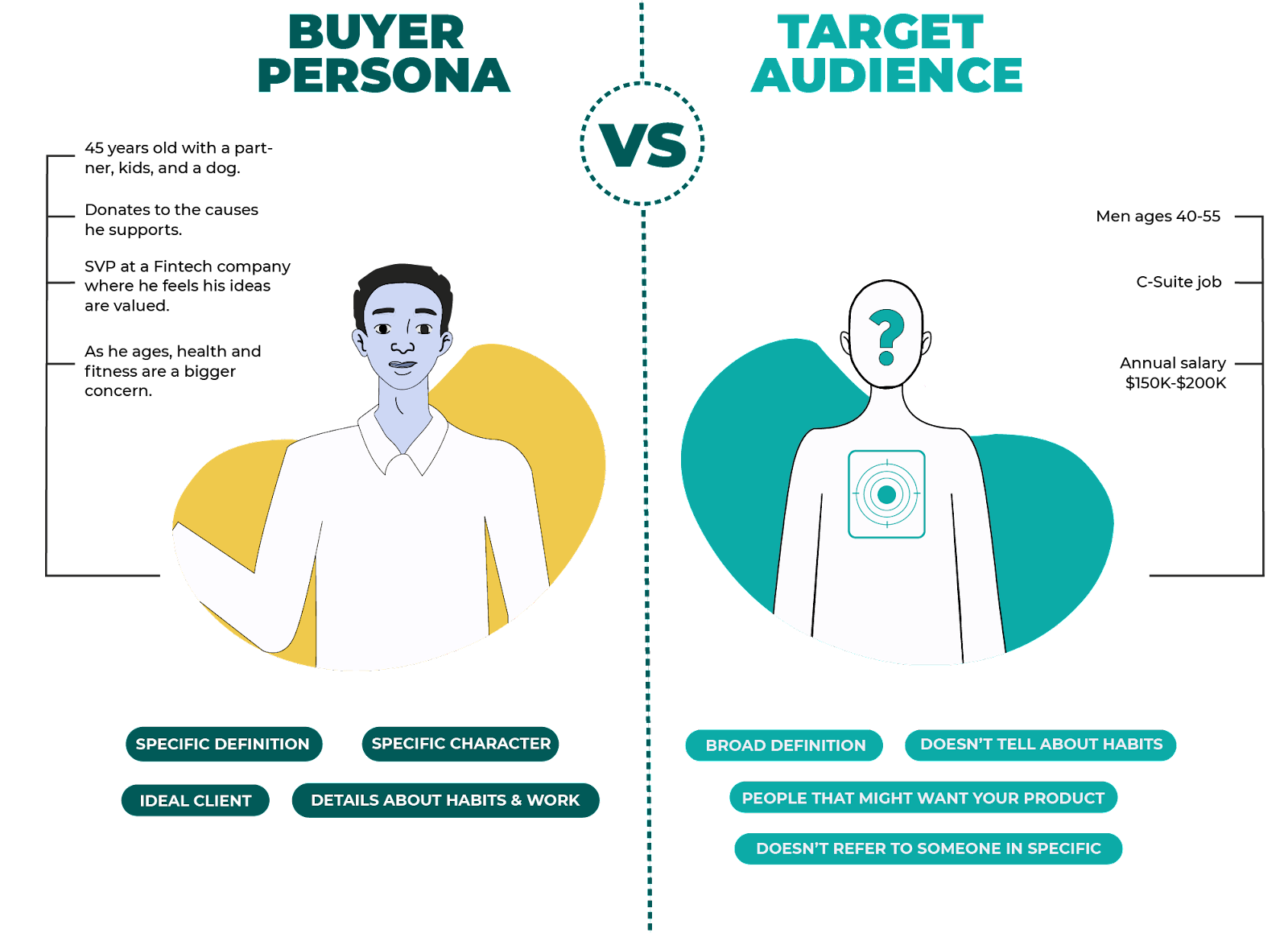
Your buyer persona should be more detailed than a general target audience (so you're not targeting every possible SaaS lead - just the right ones). You want to have not just demographic information but psychographic and behavioral attributes as well.
#2: Identify problems your audience faces along their journey
Remember that your buyer persona has a problem, but they may not yet be aware of it, especially if they’re at the very top of the funnel. Once you have your buyer persona nailed down, you can begin to do some specific customer research to find their most pressing pain points.
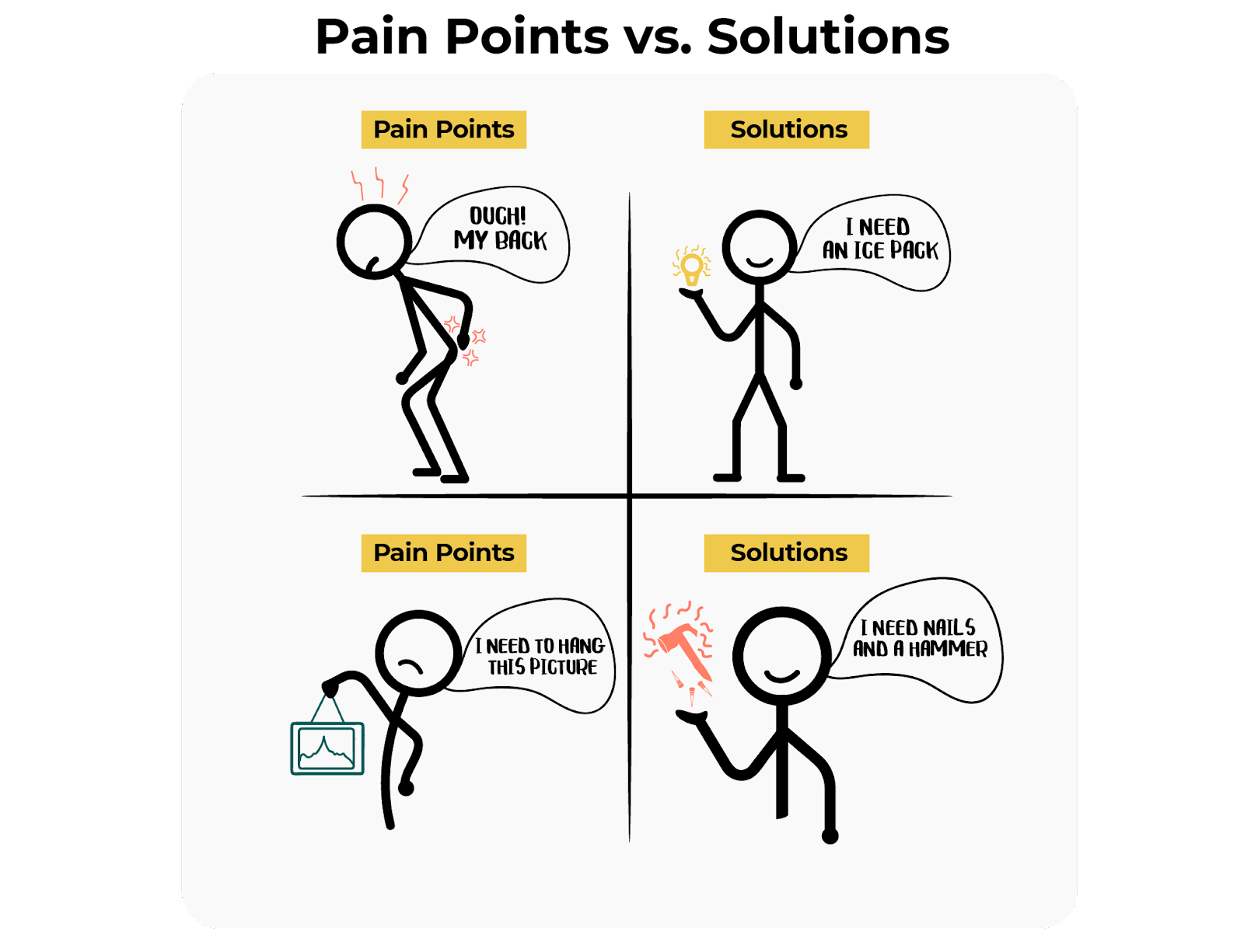
Remember, as depicted above, a pain point is not a solution. When they’re still early in the funnel, they aren’t looking for a solution yet, so if you come storming in with one, you’re likely to scare them off.
Instead, focus on figuring out what those specific pain points are, then work to make sure they’re aware of them and slowly begin to guide them toward solutions (that only your product can offer, of course).
#3: Map your customer journey
Usually, the buyer’s journey falls into the same general stages as your funnel. But a customer journey can be a bit more in-depth, with more steps along the way and more teams and individuals involved. This is especially true for B2B brands that tend to have a much longer buying cycle.
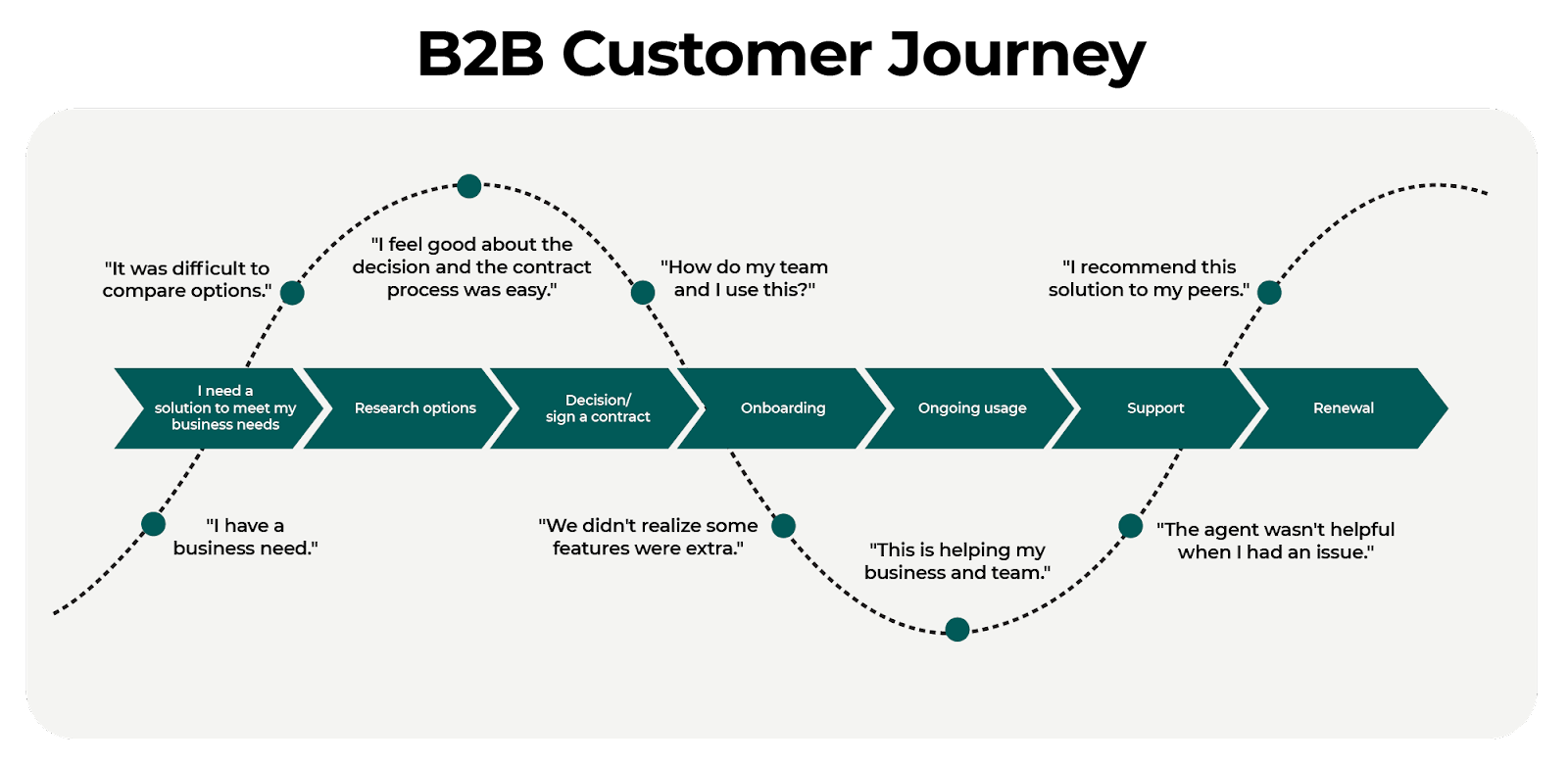
While there are stages of the buyer’s journey that remain consistent across industries and business types, some will be unique to your brand.
#4: Create lead magnets that solve the identified problems
As we mentioned earlier, lead magnets are assets that persuade your leads to exchange their contact information for a piece of content that offers them high value.
For instance, you’ve probably noticed the free templates sprinkled throughout this article. Those are lead magnets, and we’re hoping you’ll find them valuable enough to trade your email address to get them (fingers crossed).
#5: Create a highly-converting landing page for your funnel
Landing pages are crucial to the success of your lead gen campaigns. If your landing page doesn’t push visitors farther along in your funnel or (even worse) leads them to drop off, you’ve got big trouble on your hands.
Make sure you have a landing page for each specific offer and that it’s optimized for lead gen.
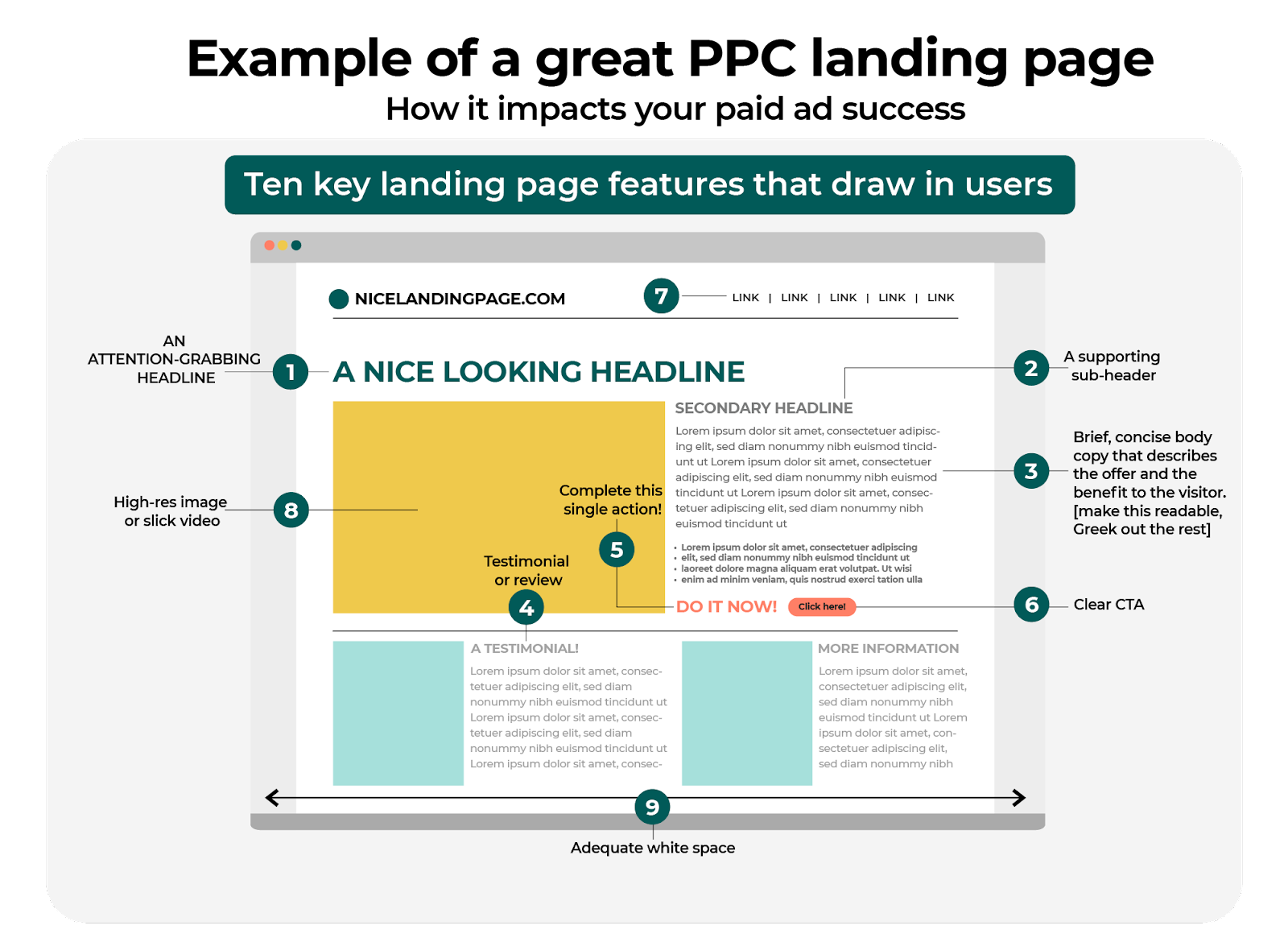
Be sure your landing page has one clear CTA on it and that it’s the only action you’re asking visitors to take. Also make sure your messaging is consistent with your offer and that it speaks directly to your buyer persona and addresses their pain points.
#6: Use inbound and outbound methods to drive traffic
There are many ways to interact with leads and move them through the funnel. At FPS, we’re huge proponents of inbound marketing, which brings leads to you (rather than you going in pursuit).
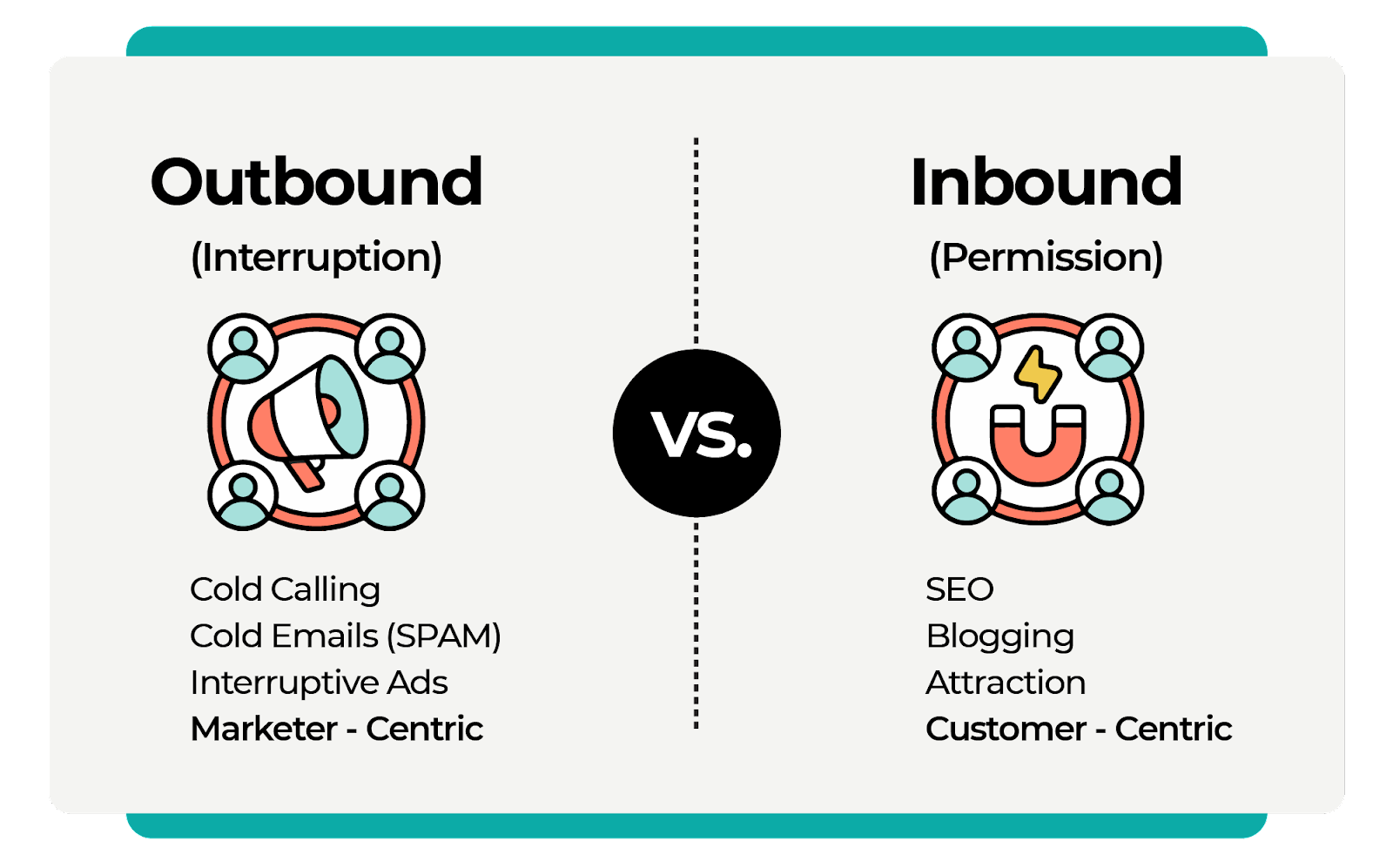
There are, however, times when an outbound approach can be highly effective — the trick is knowing when to use each.
Inbound lead generation
Inbound lead generation falls under the umbrella of content marketing. It involves creating content assets (usually called lead magnets in this context) that draw leads into the funnel. Content can be gated or ungated and can be designed to align with each stage of the funnel. Inbound also includes other types of organic and paid marketing, like SEO and PPC.
SEO
Search engine optimization is one of the most effective ways to connect leads with your brand. It involves targeting keywords related to your brand so you’ll pop up in search results. SEO works best when you target specific, long-tail keywords that fulfill user search intent.
Content marketing
Content marketing will vary depending on where in the funnel you’re targeting your leads. TOFU content will include more general information, blogs, listicles, etc. MOFU content gets more in-depth with ebooks and whitepapers, and BOFU content really pushes the brand with free trials, case studies, and demos.
PPC
PPC is a form of paid inbound marketing. You can target PPC campaigns to raise brand awareness or make a specific offer. Your goals will guide the type of PPC campaign you run. If you want more traffic (so, more new leads in the funnel), you’ll probably run an awareness campaign. If you want warmer leads, a retargeting campaign may be your best bet.
Email marketing
Lead gen relies heavily on email marketing, which is often made easier through marketing automation. Inbound email marketing involves getting leads to sign up or subscribe to your newsletter or mailing list. Once you have them, you can follow up with a variety of campaigns to nurture them through the funnel.
Social media
Your social media platforms are a powerful asset to bring leads to your brand. You can run paid social posts to gain new followers and also use your platforms organically to engage with and nurture existing followers.
Outbound lead generation
Outbound lead gen shifts the power dynamics — in this case, you become the pursuer trying to woo the lead into your funnel. Here are some of the most popular methods of outbound lead gen:
Social media outreach
Outbound social involves reaching out to leads directly, usually through direct messages (DMs). This can be a risky approach, as people don’t always like it when strangers (especially brands) slide into their DMs. Make sure you’re doing the inbound work first — creating an organic presence for your brand — before you get too personal.
Cold email outreach
Outbound email entails sending emails to people, companies, or lists you haven’t contacted or interacted with before. You’re casting a wide net with cold emails, so you want to make sure they’re as personalized as possible.
Content syndication
Content syndication is when you distribute the lead gen content you create across multiple channels to make sure it gets in front of exactly the right audience. Cold emails would fall under the umbrella of content syndication, as do other approaches like telemarketing.
Cold calling
As mentioned above, cold calling, or telemarketing, is a form of content syndication. This isn’t an easy tactic, as you need to have a lot of data (valid phone numbers) to begin and a team that’s confident and comfortable on the other end of the line (and used to getting hung up on).
Referral programs
Referral marketing is probably the most hands-off outbound approach because your existing customers do a lot of the heavy lifting. They’re the ones bringing new leads into the funnel, so what you need to focus on is equipping them to do that. Offer incentives for referring new customers or contest entries for social shares, etc.
#7: Use lead generation funnel software to build and manage a prospect database
Basically, what we’re saying here is — you need a CRM. A good CRM is absolutely critical to effective lead generation, and you need one that’s reliable and user-friendly to ensure you always have the most up-to-date lists and a database that’s secure and robust.
As a HubSpot agency partner, we always recommend starting with their free CRM. It’s the best product available whether you’re just starting out or have an existing database to move over. It’s hassle-free with a very small learning curve, so you can start using it right away.
#8: Collect prospect data
So, now that you’ve got the software, you need the data to populate it. But how do you do that?
Data collection is a big issue for lead gen — in fact, it’s one of the top issues marketers face when starting a lead gen campaign.
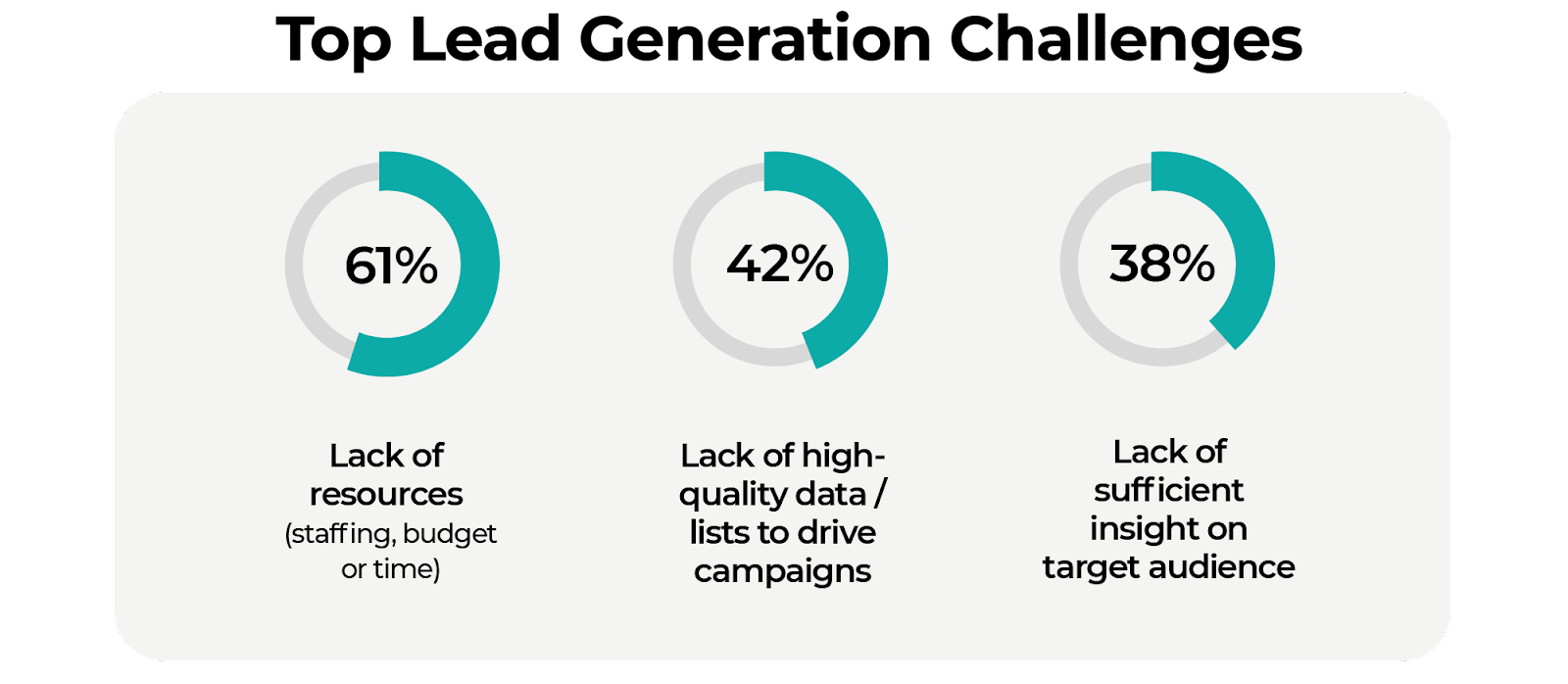
Lead magnets are your best option to overcome these challenges and collect the data you need.
#9: Pass leads to sales to close
This can be a tough one, depending on the relationship between your sales and marketing departments and whether or not you have a sales enablement strategy.
You’ll need to set parameters around what triggers your team to push a lead to the sales department. That might be signing up for a free trial or requesting a demo. Just remember that once you’ve put all this effort into nurturing the lead and building a relationship, a smooth transition to sales is critical. You don’t want it to be a rude awakening if your sales department takes a different approach to closing the deal.
Ultimately, this will require collaboration and communication between teams to ensure the move from marketing to sales is seamless and hassle-free.
#10: Improve CRO
Even if you’re satisfied with the number of leads who end up converting, you can always do better. And if you find that your conversion numbers are slipping, it’s even more important to focus your efforts on conversion rate optimization, or CRO.
First, you need to understand what your current conversion rate is:
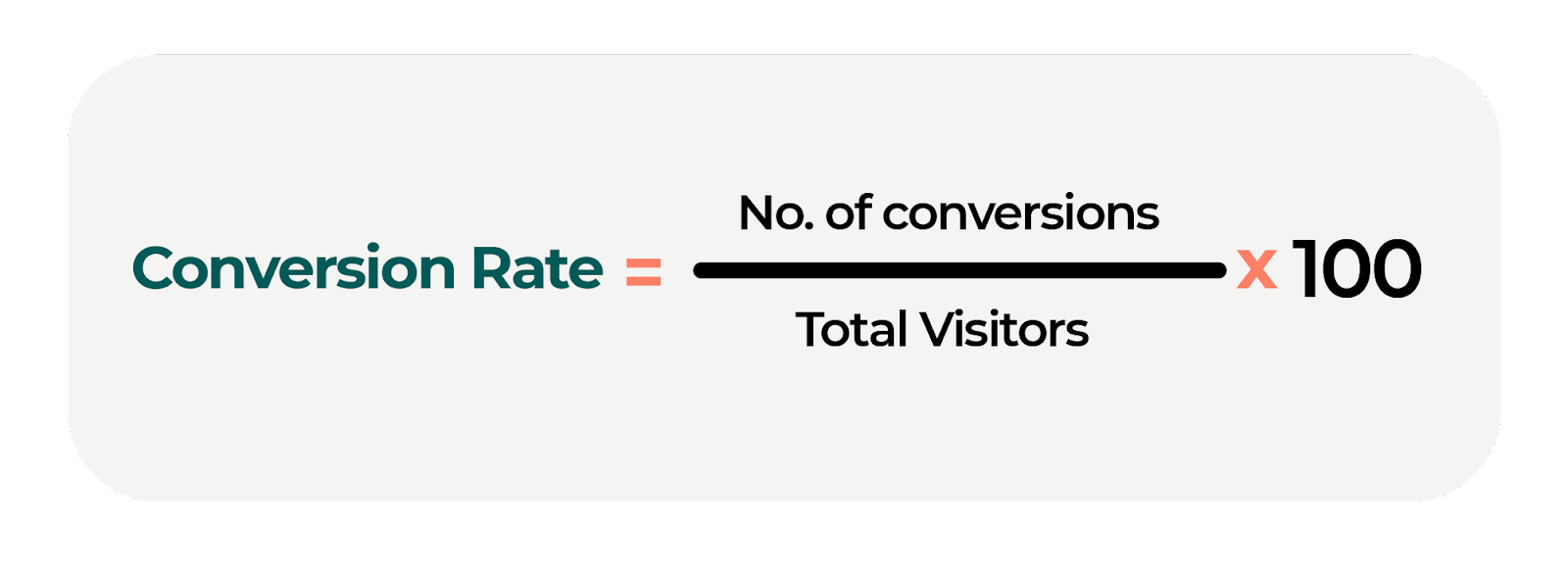
From there, you can take action to improve conversions by using the foundations of growth marketing. You’ll want to test everything (A/B or split testing one element at a time), then track that data and make adjustments. Experimentation is key as you identify barriers and work to break them down. You may also want to look at digging deeper into segmentation so you know you’re delivering the most custom and personalized experience to your leads.
#11: Analyze, Experiment, Adjust
That leads to our last step, which is what you’ll already be doing for CRO. You want to make sure you’re tracking all relevant data and, from there, building hypotheses you can test and experiment with.
Keep a close eye on analytics, and track the metrics that matter most. You’ll want to look at your leads to customer conversion rate, along with your landing page conversion rate and ad conversion rate. You might find your overall conversion is high, but leads are dropping off your landing pages before clicking your CTA. Testing a new CTA or adapting your landing page to better align with your offer may increase your conversion rate even more.
Build a Lead Funnel That Generates Sales for Your Business
So, we know that was a lot of funnels. But hopefully a lot of fun, too (we’re marketers — we have an interesting definition of “fun”). Having your lead generation funnel mapped out before you start a campaign really is critical to its outcome and to your success.
That’s where FPS can lend a hand. We bring the funnels and the fun. Learn more about the lead generation services we provide.
